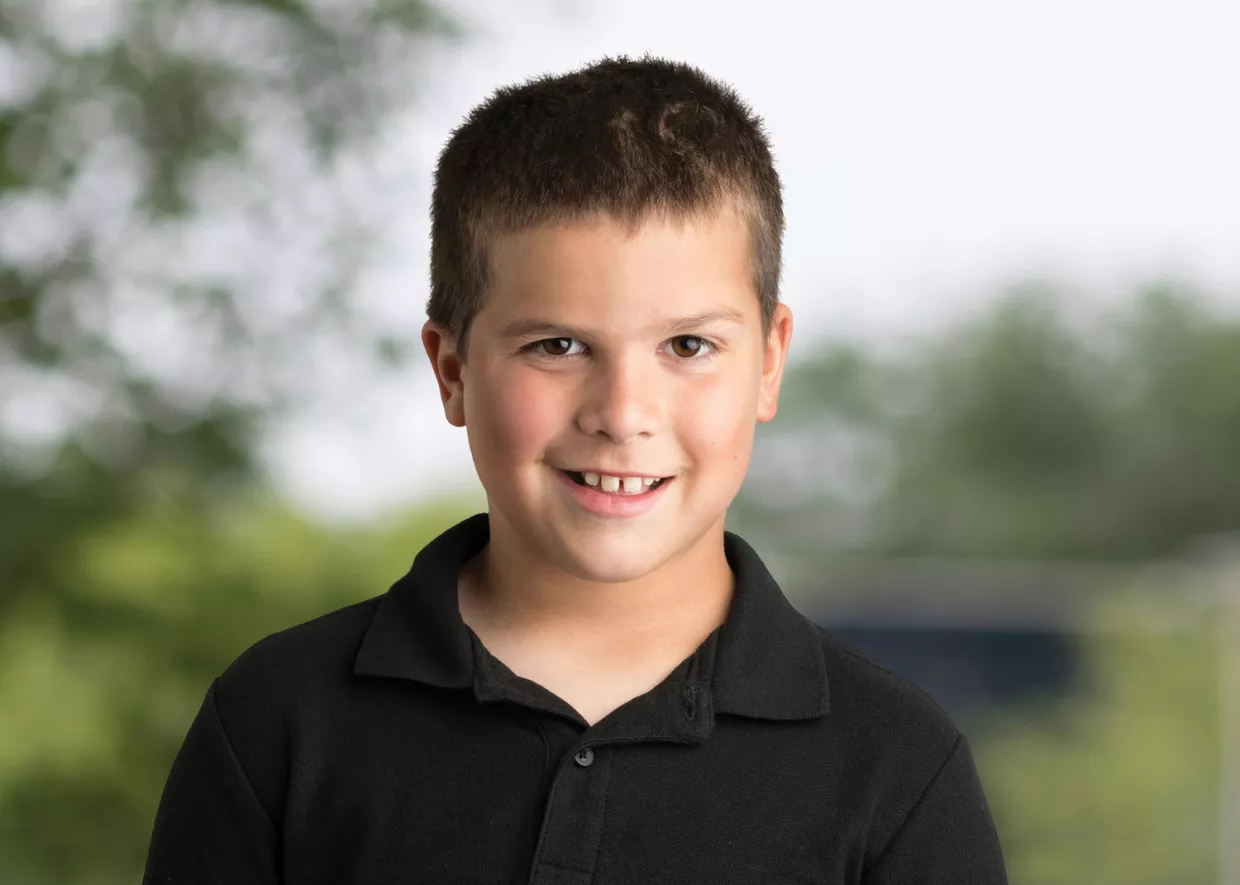Ean Gorsh

On a seemingly normal day in February 2014, Ean Gorsh fell asleep in front of the television. But his parents, Teri and Zach, realized something was very wrong.
“We found him unresponsive and vomiting at the same time,” remembers Teri.
Ean was rushed by ambulance to University of Iowa Stead Family Children’s Hospital.
“They ran tests and said he probably had a seizure, but everyone is allowed to have one [seizure] episode in their life,” remembers Teri. “This didn’t appear to be anything that was going to be a problem for him.”
It did, however, become a problem for Ean, and he began having nightly seizures that would last up to 15 minutes. For years, Ean took medications to try to alleviate his seizures, but there was still no evident reason for his seizures. He was referred to pediatric neurosurgeons, who suggested an intracranial EEG, where the right side of Ean’s skull would be removed and roughly 200 electrodes would be placed in his brain to pinpoint where the seizures were originating.
Ean’s intracranial EEG showed seizure activity in the entire right side of his brain. Because of this, his surgeons disconnected a portion of the right side of his brain in the hopes of minimizing his seizures and sparing his motor skills. Pathology tests on that portion of his brain revealed cortical dysplasia, an abnormality in brain development that causes epilepsy.
“In Ean’s case, the right side [of his brain] was a bit smaller. It was never detectable prior to pathology,” says Teri.
Just 17 days after the surgery, Ean began experiencing daytime seizures.
“It was completely devastating for everyone,” says Teri. “The doctors told me not to give up; there’s always hope. That’s when we started talking about a hemispherotomy.”
A hemispherotomy is the complete removal or disconnection of one side of the brain.
“The decision to have a hemispherotomy was very difficult,” says Teri. “It seemed extreme.”
In addition to the damage being done to Ean’s body with each seizure, he was also at risk for SUDEP—sudden unexpected death in epilepsy. His family and care team came to the decision together that the hemispherotomy was his best option. He underwent the roughly 10-hour surgery on January 11, 2017.
“He woke up and was talking. He was Ean,” recalls Teri.
Ean spent three weeks in an inpatient physical therapy center to recover from his surgery.
“When Ean came home from rehab, he was in a wheelchair, had very limited mobility in his arm, and could just take a few steps,” says Teri. “Today, Ean is walking, jumping, and playing basketball.”
Ean’s team of pediatric experts made all the difference throughout his journey.
“It’s necessary for him to be in a comprehensive children’s hospital because he needs a lot of different specialists in one place,” says Teri. “They make sure everyone is on the same page and the parents know what’s going on. You know you’re part of that team.”
Ean has not had a seizure since the hemispherotomy in January 2017, and his family couldn’t be more thrilled.
“The biggest relief is knowing Ean is seizure-free and we made the right decision,” says Teri. “The doctors were right and they didn’t give up.”